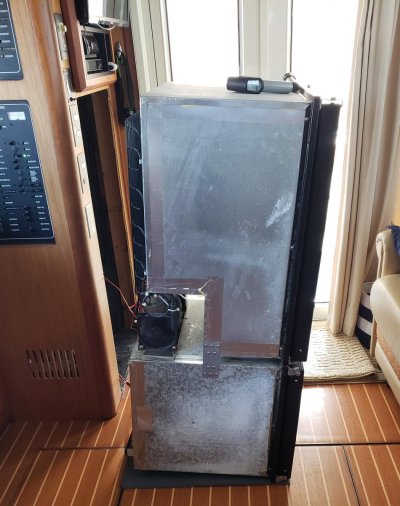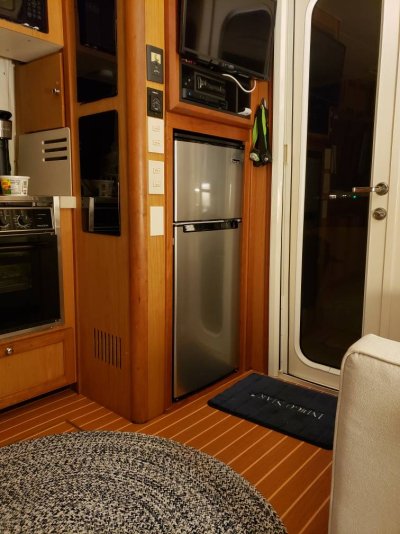As an update, or admittance to failure, as mentioned before, when this Nova Kool RFU6200 refrigerator/freezer is pulled out from the cabinet it resides in, its temperature gets down to near 29°, which is nice,, but when slid back in it goes up to around 45° depending on the outside condition somewhat, it has been as high as 65°...
So that was obviously a ventilation issue and also diagnosed by Nova Kool, so I installed 4 fans, (all powered by its own dedicated DC circuit breaker to the circled distribution fused bus bar), installed in the following positions -1 DC fan low, at the base of the cabinet, next to a vent, to pull cool air in from the main air conditioned cabin, pointing slightly upward a little, 2 more fans along the lower back wall, pointing at a 45° angle towards the rear coils of the refrigerator, as to help direct the air up, and one slightly more powerful fan about 4 feet higher, in yet another effort to help removing the warm air that can't get out...with all that air circulation the temp climbed back up to mid 40s when repositioned back into its home....uuhhggggView attachment 119923View attachment 119924View attachment 119925
So it turns out it was a boat builder's problem, not a Nova Kool problem.
A company can build a good product, but it can't control what the buyer does with it.








